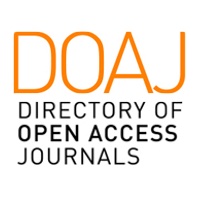NIÑA O NIÑO: INTERVALOS ENTRE NACIMIENTOS Y EL SEXO DE LOS HIJOS ENTRE LOS WICHÍ
Resumen
Palabras clave
Referencias
ALVARSSON, JA (1999) Foraging in town: survival strategies among the ‘Weenhayek of Bolivia and Argentina. En: MILLER, ES (Ed.) Peoples of the Gran Chaco. Bergin & Garvey, pp. 23-35. USA.
BAILEY, RC, JENIKE, MR, ELLISON, PT, BENTLEY, GR, HARRIGAN, AM and PEACOCK, NR (1992) The ecology of Barth seasonality among agriculturalists in central Africa. Journal of Biosocial Science, 24: 393-412.
BARÚA, G, DASSO, MC y FRANCESCHI, ZA (2008) El papel femenino en la convivencia Wichí del Chaco Central. En: HIRSCH, S (Coord.) Mujeres Indígenas en la Argentina. Cuerpo, Trabajo y Poder. Editorial Biblos, pp. 117-151. Buenos Aires.
BEISE, J, and VOLAND, E (2002) A multilevel event history analysis of the effects of grandmothers on child mortality in a historical German population. Demographic Research, 7 (13): 470-494.
Blanchard, R, and Bogaert, AF (1997) The relation of closed birth intervals to the sex of the preceding child and the sexual orientation of the succeeding child. Journal of Biosocial Science, 29: 111-118.
Blurton Jones, NJ (1986) Bushmen birth spacing: a test of optimal interbirth intervals. Ethology and Sociobiology, 7: 91-105.
BLURTON JONES, NJ (1987) Bushman birth spacing: direct tests of some simple predictions. Ethology and Sociobiology, 8: 183-203.
BRAUNSTEIN, JA (1977) Matrimonio y familia entre los Mataco. Cuadernos Franciscanos, 41: 143-156.
CHEN, LC, AHMED, S, MELITA, G, and MOSLEY, WH (1974). A prospective study of birth interval dynamics in rural Bangladesh. Population Studies, 28: 277-297.
CLUTTON-BROCKE, TH (1991) The Evolution of Parental Care. Princeton, NJ. Princeton University Press.
CORDEU, EJ y DE LOS RIOS, M (1982) Un enfoque estructural de las variaciones socioculturales de los cazadores-recolectores del Gran Chaco. Suplemento Antropológico, XVII (1): 131-195.
CROGNIER, E (2003) Reproductive Success: Which Meaning? American Journal of Human Biology, 15: 352-360.
CROGNIER, E, ELIZONDO, S, CARATINI, A, ZUBIETA, N, NIBORSKY, R y CARNESE, F (1996) Los comportamientos reproductivos de la población Mapuche de la provincia de Río Negro. Revista Argentina de Antropología Biológica, 1 (1): 86-97.
CRONK, L (1989) Low socioeconomic status and female-biased parental investment: the Mukogodo example. American Anthropologist, 91: 414-429.
CRONK, L (1991) Preferential parental investment in daughters over sons. Human Nature, 2 (4): 387-417.
DE LOS RIOS, MA (1977) Vida y muerte en el cosmos Mataco. Cuadernos Franciscanos, 41: 101-132.
DIAMOND, J (1986) Biology of birds of paradise and bowerbirds. Annual Review of Ecology and Systematics, 17: 17-37.
FERRARINI, SO y MENEZ, MG (2009a) Analizando estrategias adaptativas: la proporción sexual al nacimiento en etnias chaqueñas. En: MÉNDEZ, MG (Comp.) Terra Incognita. Estudios Antropológicos en el Chaco Meridional. Editorial Universitaria de La Plata, pp. 35-55. La Plata, Argentina.
FERRARINI, SO y MENDEZ, MG (2009b) Inversión reproductiva: número, sexo y supervivencia en Chorote y Ayoreo. En: MÉNDEZ, MG (Comp.) Terra Incognita. Estudios Antropológicos en el Chaco Meridional. Editorial Universitaria de La Plata, pp. 56-74. La Plata, Argentina.
FERRARINI, SO y MENDEZ, MG (2011) Historia reproductora y análisis de la fecundidad de las mujeres Chorote, Argentina. Memorias de la Convención Internacional de Antropología Anthropos 2011. II Congreso Iberoamericano de Antropología, pp. 2941-2958. La Habana, Cuba.
FISHER, RA (1930) The Genetical Theory of Natural Selection. United Kingdom. Oxford University Press.
GEARY, DC (1998) Male, Female: The Evolution of Human Sex Differences. Washington, DC. American Psychological Association.
GRAY, SJ (1994) Comparison of effect of breast-feeding practices on birth-spacing in three societies: Nomadic Turkana, Gainj and Quechua. Journal of Biosocial Science, 26 (1): 69-90.
GREKSA, LP (2002) Population growth and fertility patterns in an Old Order Amish settlement. Annals of Human Biology, 29 (2): 192-201.
HELLE, S, LUMMAA, V, and JOKELA, J (2002) Sons reduced maternal longevity in preindustrial humans. Science, 296: 1085.
HENRIPIN, MJ (1954) La fécondité des ménages canadiens au début du XVIIIe siècle. Population, 9: 61-84.
HERN, WM (1994) Cultural change, polygyny, and fertility among the Shipibo of Peruvian Amazon. South American Indian Studies, 4: 77-86.
HILL, K and HURTADO, AM (1989) Hunther-gatherers of the New World. American Scientist, 77: 437-443.
HINDE, A (2002) Demographic perspectives on human population dynamics. En: Macbeth, H, and Collinson, P (Eds.) Human Population Dynamics: Cross-Disciplinary Perspectives. Cambridge University Press, pp. 17-40. Cambridge.
HURTADO, AM, HAWKES, K, and HILL, K (1985) Female subsistence strategies among Ache hunter-gatherers of eastern Paraguay. Human Ecology, 13: 1-28.
HURTADO, AM, HILL, K, KAPLAN HS, and HURTADO, I (1992) Tradeoffs between female food acquisition and child care among Hiwi and Ache Foragers. Human Nature, 3 (3): 185-216.
KAPLAN, HS, and LANCASTER, JB (2004) An Evolutionary and ecological analysis of human fertility, mating patterns, and parental investment. En: Wachter, KW, and Bulatao, RA (Eds.) Offspring. Human Fertility Behaviour in Biodemographic Perspective. The National Academies Press, pp. 170-223. Washington, D.C.
KNODEL, J (1968) Infant mortality and fertility in three Bavarian villages: an analysis of familiy histories from the 19th century. Population Studies, 22: 297-318.
KREBS, JR and DABIES, NB (1993) An Introduction to Behavioural Ecology. Oxford. Blackwell.
LAWSON, DW, MACE, R (2009). Trade-offs in modern parenting; a longitudinal study of sibling competition for parental care. Evolution and Human Behaviour 37 (6): 1408-1421.
LEE, RB, and DE VORE, I (Eds) (1968) Man the Hunter. Chicago. Aldine Publishing Company.
LOOS, RJF, DEROM, C, EECKELS, R, DEROM, R and VLIETINCK, R, (2001) Length of gestation and birth weight in dizygotic twins. Lancet, 358: 560–561.
LOW, BS (1991) Reproductive life in nineteenth century Sweden: an evolutionary perspective on demographic phenomena. Ethology and Sociobiology, 12: 411-448.
LOW, BS (1993) Ecological demography. A synthetic focus in evolutionary anthropology. Evolutionary Anthropology, 1 (5): 177-187.
MACE, R (1996) Biased parental investment and reproductive success in Gabbra pastoralist. Behavioral Ecology & Sociobiology, 38: 75-81.
MACE, R (2000) Evolutionary ecology and human life history. Animal Behaviour, 59: 1-10.
MACE, R and SEAR, R (1997) Birth interval and the sex of children in a traditional African population: an evolutionary analysis. Journal of Biosocial Science, 29: 499-507.
MARSAL, K, PERSSON, PH, LARSEN, T, LILJA, H, SELBING, A and SULTAN, B (1996) Intrauterine growth curves based on ultrasonically estimated foetal weights. Acta Paediatrics, 85: 843–848.
MENDEZ, MG y FERRARINI, SO (2011) Intervalos entre nacimientos e inversión parental en aborígenes Chorote de Argentina. Memorias de la Convención Internacional de Antropología Anthropos 2011. II Congreso Iberoamericano de Antropología, pp. 2959-2976. La Habana, Cuba.
MILLER, EM (1994) Optimal adjustment of mating effort to enviromental conditions: a critique of Chisholm’s application of life history theory. Mankind Querterly, 34: 297-316.
NATH, DC and LAND, KC (1994) Sex preference and third birth interval in a traditional Indian society. Journal of Biosocial Science, 26: 377-388.
NATH, DC, LEONETTI, DL, and STEELE, MS (2000) Analysis of Barth intervals in a non-contracepting Indian population: an evolutionary ecology approach. Journal of Biosocial Science, 32: 343-354.
PASCUAL, J (2004) Caracterización de la historia reproductora y análisis de la fecundidad de las mujeres de Tierra del Fuego. Tesis. Universidad de Barcelona.
PEACOCK, N (1991) An evolutionary perspective on the patterning of maternal investment in pregnancy. Human Nature, 2: 351-385.
RODRIGUEZ OTERO, H, BLANCO VILLEGAS, MJ, CARO, L, SÁNCHEZ COMPADRE, E y LÓPEZ MARTÍNEZ, B (2000) Factores asociados a la fertilidad en la comarca leonesa de La Cabrera. En: Caro Dobón, L et al., (Eds.) Tendencias actuales de investigación en la Antropología Física Española. Universidad de León, pp. 273-280. España.
SHORT, RV (1994) Human reproduction in an evolutionary context. En: Campbell, KL, and Wood, JW (Eds.) Human Reproductive Ecology: interactions of environment, fertility, and behaviour. New York Academy of Sciences, pp. 416-425. New York.
SCOTT, S and DUNCAN, CJ (2000) Interacting effects of nutrition and social class differentials on fertility and infant mortality in a pre-industrial population. Population Studies, 54: 71-87.
SMITH, TE (1960) The Cocos-Keeling Islands: a demographic laboratory. Population Studies, 14: 94-130.
St.GEORGE, D, EVERSON, P, STEVENSON, JC and TEDROW, L (2000) Birth interval and early childhood mortality in a migrating Mennonite community. American Journal of Human Biology, 12: 50-63.
STOREY, R (1992) Life and Death in the Ancient City of Teotihuacan. A Modern Paleodemographic Synthesis. Alabama, USA. The University of Alabama Press.
TRIVERS, RL (1972) Parental investment and sexual selection. En: CAMPBELL, B (Eds.) Sexual Selection and the Descent of Man 1871 – 1971. Aldine, pp. 344-362. Chicago.
TRIVERS, RL and WILLARD, DE (1973) Natural selection of parental ability to vary the sex ratio offspring. Science, 179: 90-92.
TURKE, RL (1988) Helpers at the nest: chidcare networks in Ifaluk. En: BETZIG, L, BORGERHOFF MULDER, M and TURKE, P (Eds.) Human Reproductive Behaviour: a Darwinian Perspective. Cambridge University Press, pp. 173-188. Cambridge.
WELLS, JCK (2000) Natural selection and sex diferences in morbidity and mortality in early life. Journal Theoretical Biology, 202: 65-76.
WESTOFF, CF, POTTER, RG, SAGI, PC, and MISHLER, EG (1961) Family Growth in Metropolitan America. Princeton, NJ. Princeton University Press.
Enlaces refback
- No hay ningún enlace refback.
Copyright (c)
Cuadernos FHyCS-UNJu por Facultad de Humanidades y Ciencias Sociales - Universidad Nacional de Jujuy se distribuye bajo una Licencia Creative Commons Atribución-NoComercial-CompartirIgual 4.0 Internacional.
Basada en una obra en http://revista.fhycs.unju.edu.ar/revistacuadernos.
Hecho con OJS - Open Journal System












